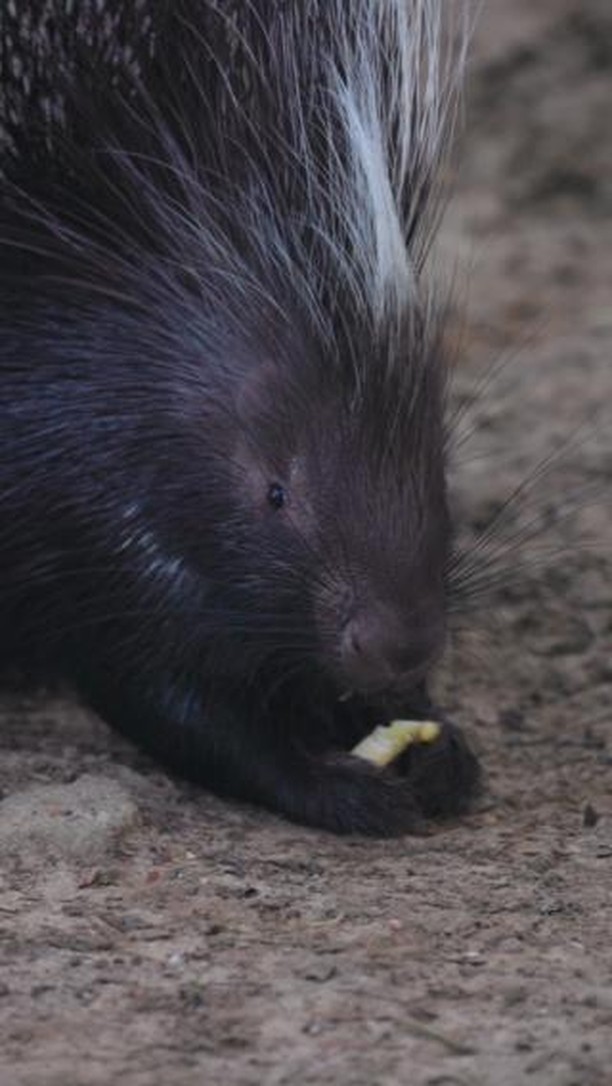- Understanding the behavioral dynamics between cape porcupines and warthogs in shared habitats.
- Exploring the adaptations and defensive mechanisms of cape porcupines.
- Examining the environmental and social benefits of mixed-species enclosures in zoos.
- Analyzing the challenges and considerations of habitat sharing in zoo management.
- Emphasizing the role of wildlife conservation in facilitating species interaction.
The intriguing pairing of cape porcupines and warthogs in a shared habitat at a zoo offers a rare opportunity to observe interspecies interactions. These two distinct species might seem an unlikely combination at first glance. However, their cohabitation is an embodiment of innovative zoo management practices aimed at enriching animal life and conserving wildlife. In this article, we’ll explore the complexities and fascinating elements of this dynamic.
Cape porcupines are known for their impressive quills, which are their primary defense mechanism. These quills are not just visually striking but are critical to their survival in the wild. When threatened, a porcupine can raise and rattle its quills as a warning. If this display does not deter a predator, the porcupine can charge backward, embedding the sharp quills into its foe and hopefully leaving it with a painful reminder not to attack again. This mechanism is a testament to the adaptations these animals have evolved over time, allowing them to thrive in various environments across southern Africa.
Sharing a space with creatures like warthogs requires a deep understanding of animal behavior. Warthogs, known for their robust snouts and social nature, are generally peaceful creatures but can be fiercely protective, especially of their young. By placing porcupines and warthogs in adjacent habitats, zookeepers draw on these observations to promote mutual curiosity and enriched living experiences for both species. The shared space strategy leverages the naturally different activity patterns of these animals — porcupines being primarily nocturnal and warthogs being diurnal — thus maximizing space usage without significant conflict.
Creating mixed-species habitats is not only beneficial for the animals’ psychological and physical stimulation but also serves an educational purpose for zoo visitors. When people observe these animals in a more naturalistic setting that mimics some aspects of their wild interactions, it fosters a deeper understanding and appreciation for biodiversity. It encourages conservation-minded thinking by highlighting how different species coexist in the wild, relying on each other within ecosystems.
From a management perspective, designing an enclosure for multi-species habitation brings its own set of challenges. For one, the health and safety of all animals involved must be the top priority. This includes continuous monitoring and intervention if adverse interactions occur. Additionally, providing ample resources — including food, water, and space — to prevent competition is crucial. The habitat itself must be adaptable to meet the needs of both species, allowing for natural behaviors such as foraging, burrowing, and nesting.
This specific pairing of porcupines and warthogs demonstrates an innovative step in contemporary zoos towards promoting ecological dynamics. Beyond the entertainment value for the public, it reinforces the broader goals of wildlife conservation. Zoos today act as modern conservation centers, not only by preserving species through breeding programs but by educating the public about the complexities of ecosystems and the importance of preserving diverse habitats.
In conclusion, sharing habitats between cape porcupines and warthogs highlights the crucial role of advanced zoo management and wildlife conservation. This practice not only enriches the lives of these animals but also becomes a powerful tool for education and conservation advocacy. By understanding and implementing these dynamic interactions, zoos can play a significant role in the preservation of animal species and the ecosystems that support them.
*****
Source Description
Talk about a prickly situation!
You may have noticed our cape porcupines have moved habitats and are now living next to our warthogs. They’re even working on sharing a space — who knew quills and snouts could make such a wild combo?


